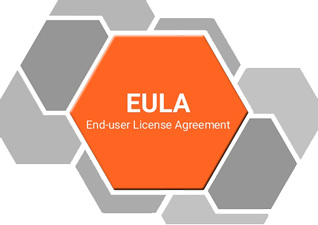
Security Databases
Easy to use application program interface
»
api
Hacker IP Address Database
| key | The authorization key associated with your account. This alphanumeric value uniquely identifies your account. |
| ip | The IP address to check. This can be an IPv4 or IPv6 address. |
| format | The format desired for the response. Valid values are ‘x’ (XML), ‘j’ (JSON), and ‘p’ (Plain Text). |
The parameters can be passed on the URL (using a GET method), or passed in the request (using a POST method). The actual server name to use will be provided by Telium upon setup of your account (or trial). For example, a query with parameters sent in the URL would look like:
The response from the query will contain four pieces of information:
| result | The result of the query. Valid values include 0 (success), 1 (account not valid), 2 (account not valid yet), 3 (account expired), 4 (service failure) |
| ip | The IP address matched by SecData. This can be either the exact IP address as passed to SecData, or an associated IP address as found by SecData. |
| match | The type of match found. Valid values are ‘0’ (none), ‘1’ (exact match), ‘2’ (match to associated address). |
| risk | The risk that the IP address is associated with hacking. Valid values range from 0 (low) to 100 (high). |
The response to the above example would look like:
Fraud Phone Number Database
| key | The authorization key associated with your account. This alphanumeric value uniquely identifies your account. |
| phone | The phone number you wish to check. This is the raw phone number as dialled (including optional outside line access digits, international call prefix, country code etc.). |
| region | The region in which the PBX resides, used to decode a valid phone number structure. The region code is a 2 letter code as defined by ISO 3166-2. |
| format | The format desired for the response. Valid values are ‘x’ (XML), ‘j’ (JSON), and ‘p’ (Plain Text). |
The parameters can be passed on the URL (using a GET method), or passed in the request (using a POST method). The actual server name to use will be provided by Telium upon setup of your account (or trial). For example, a query with parameters sent in the URL would look like:
The response from the query will contain five pieces of information:
| result | The result of the query. Valid values include 0 (success), 1 (account not valid), 2 (account not valid yet), 3 (account expired), 4 (service failure) |
| rawphone | The raw phone number as passed to SecData. |
| localphone | The localized phone number as interpreted by SecData. This includes removal of dialing prefixes and interpretation of number components. In the case of an invalid raw phone number this value will be blank. |
| match | The type of match found. Valid values are ‘0’ (none), ‘1’ (match raw phone number), ‘2’ (match localized phone number), ‘3’ (match raw and localized phone numbers) |
| risk | The risk that the phone number is associated with fraud. Valid values range from 0 (low) to 100 (high). |
The response to the above example would look like:

